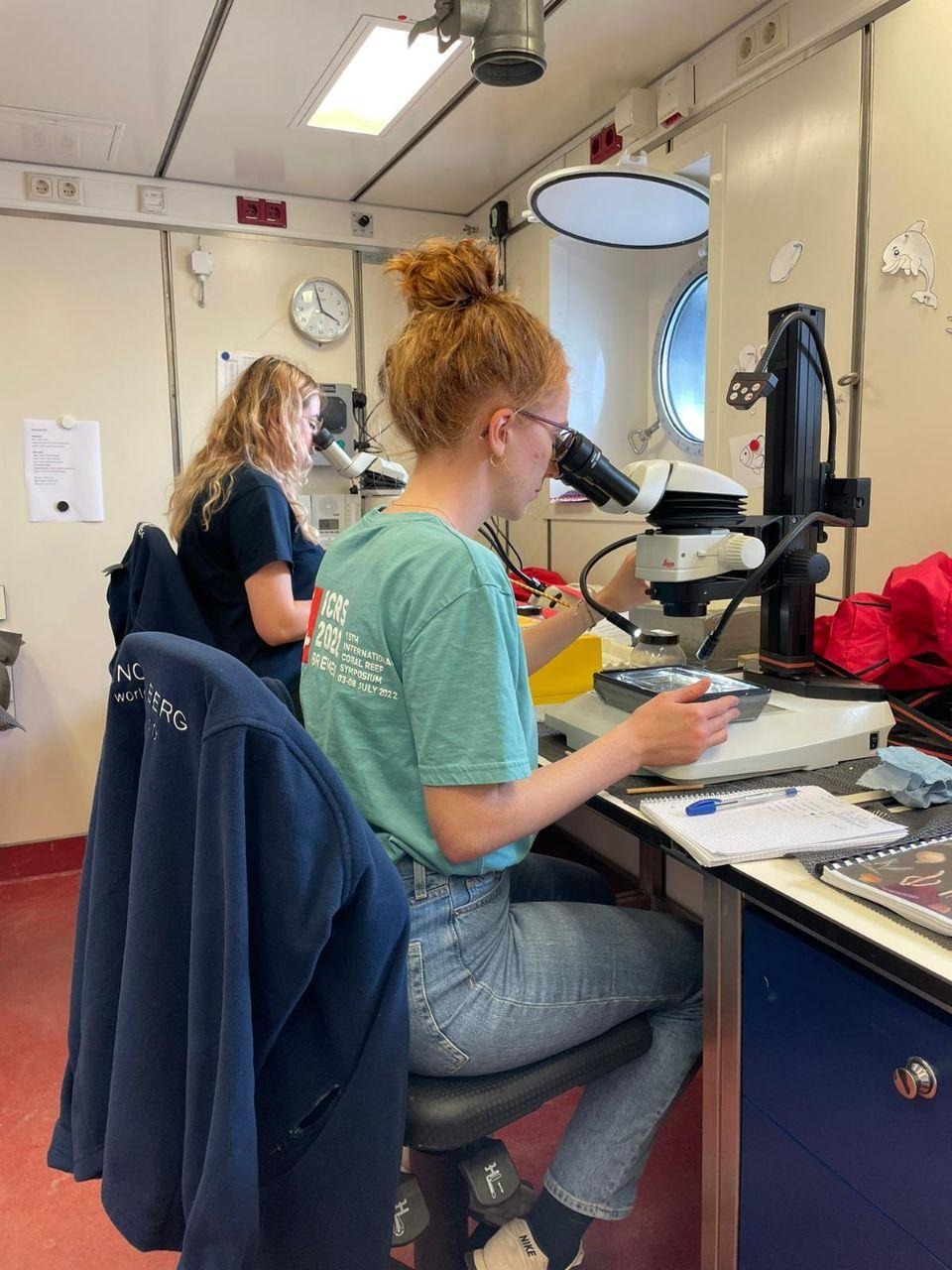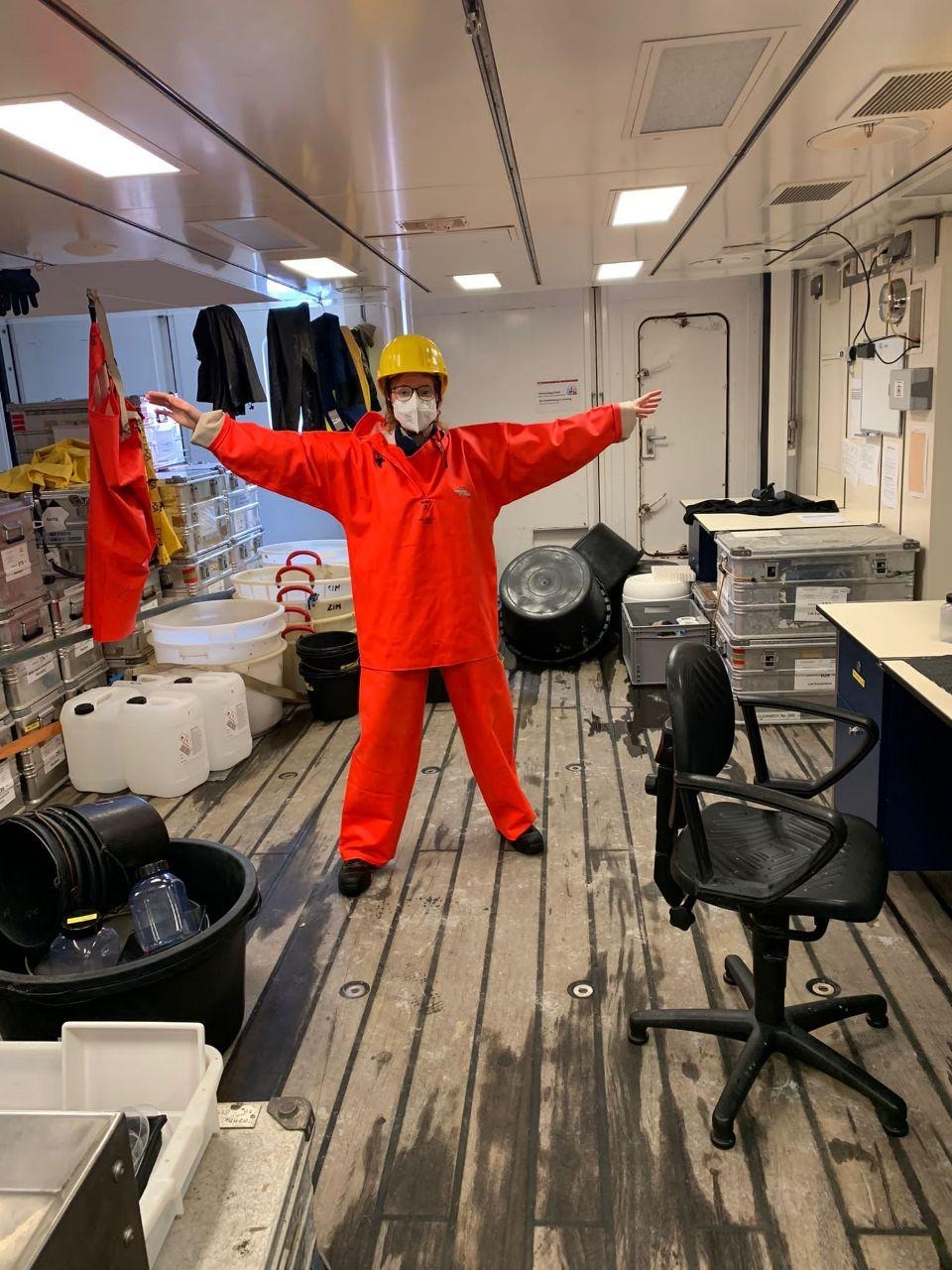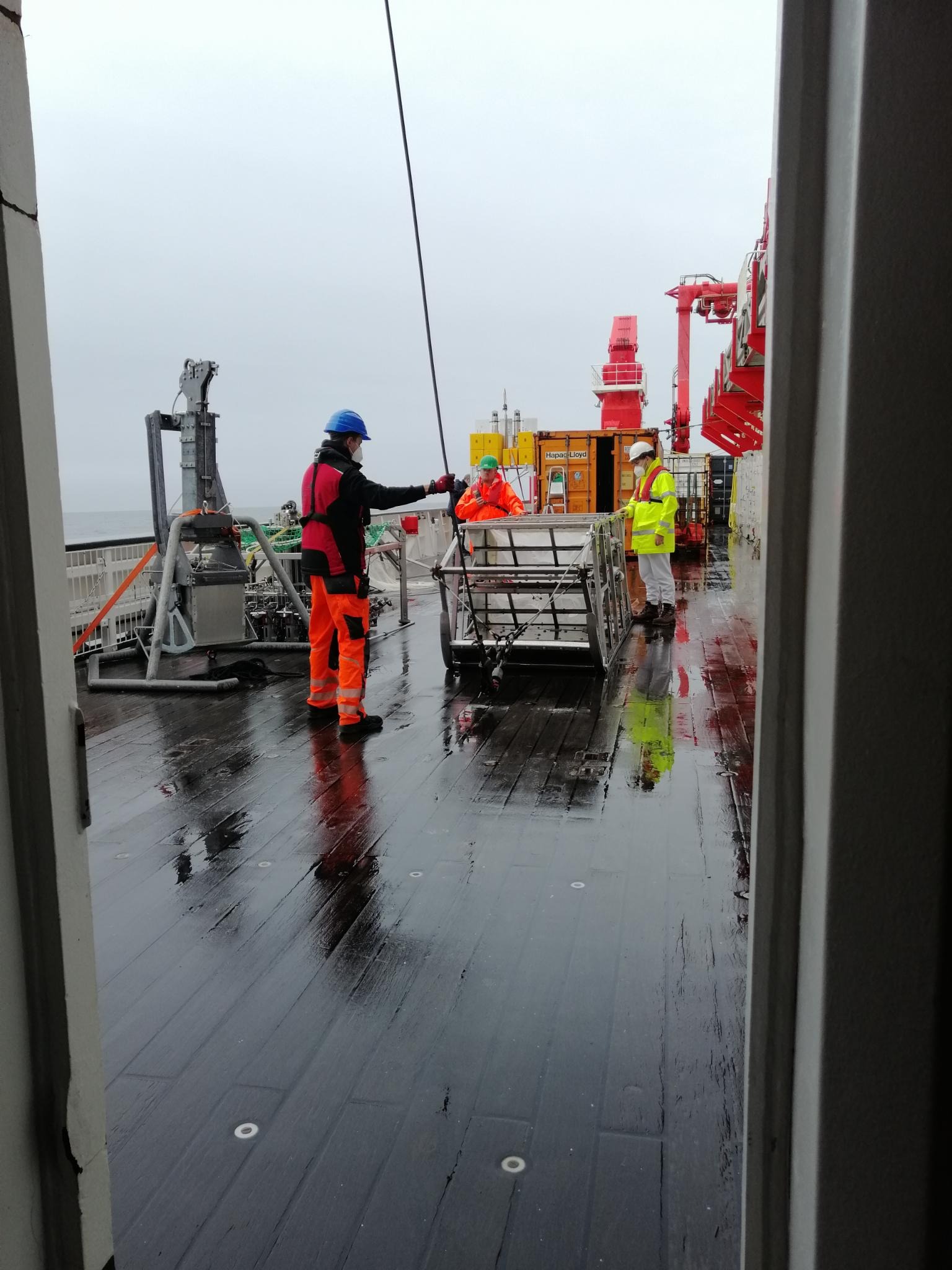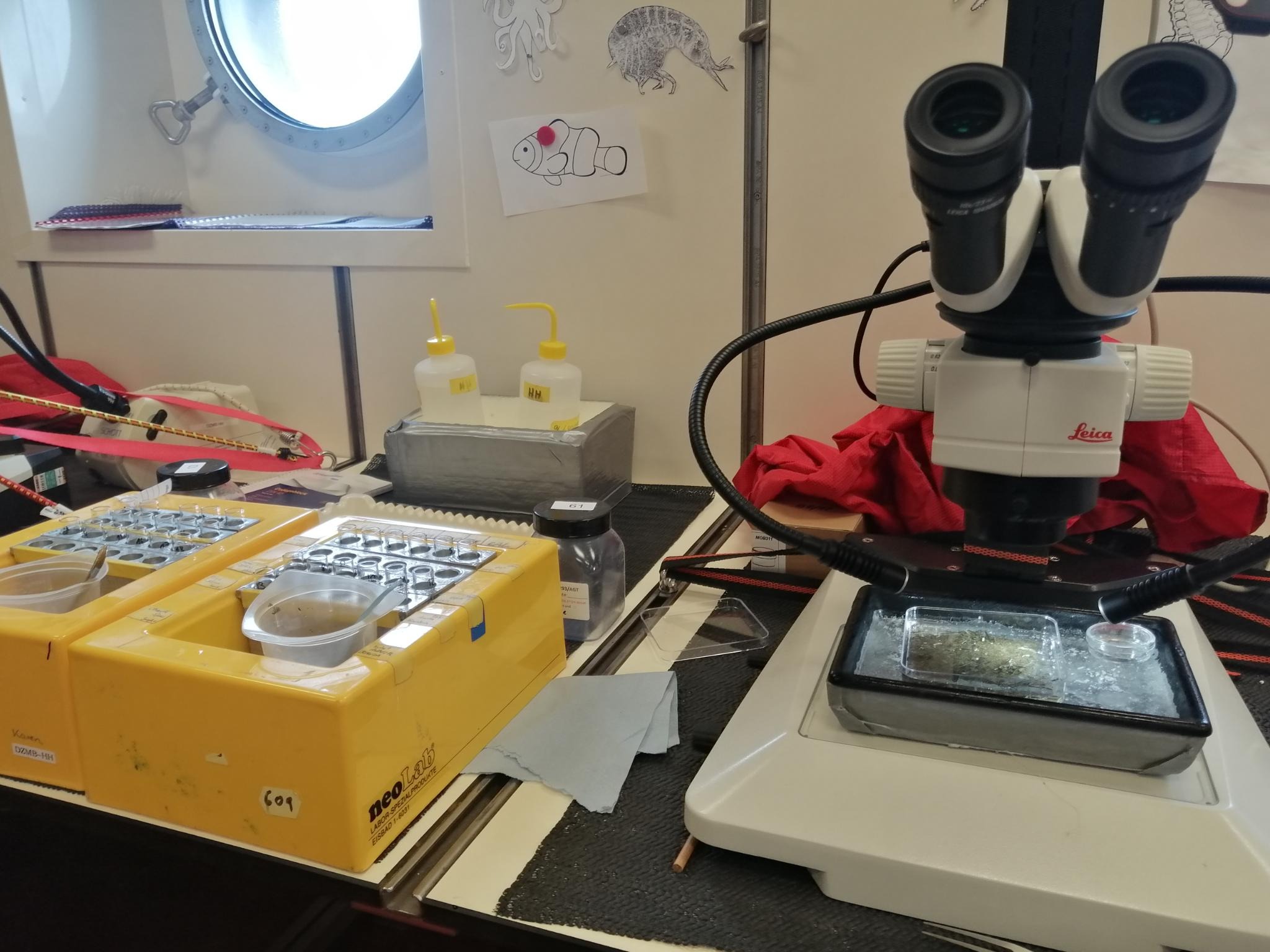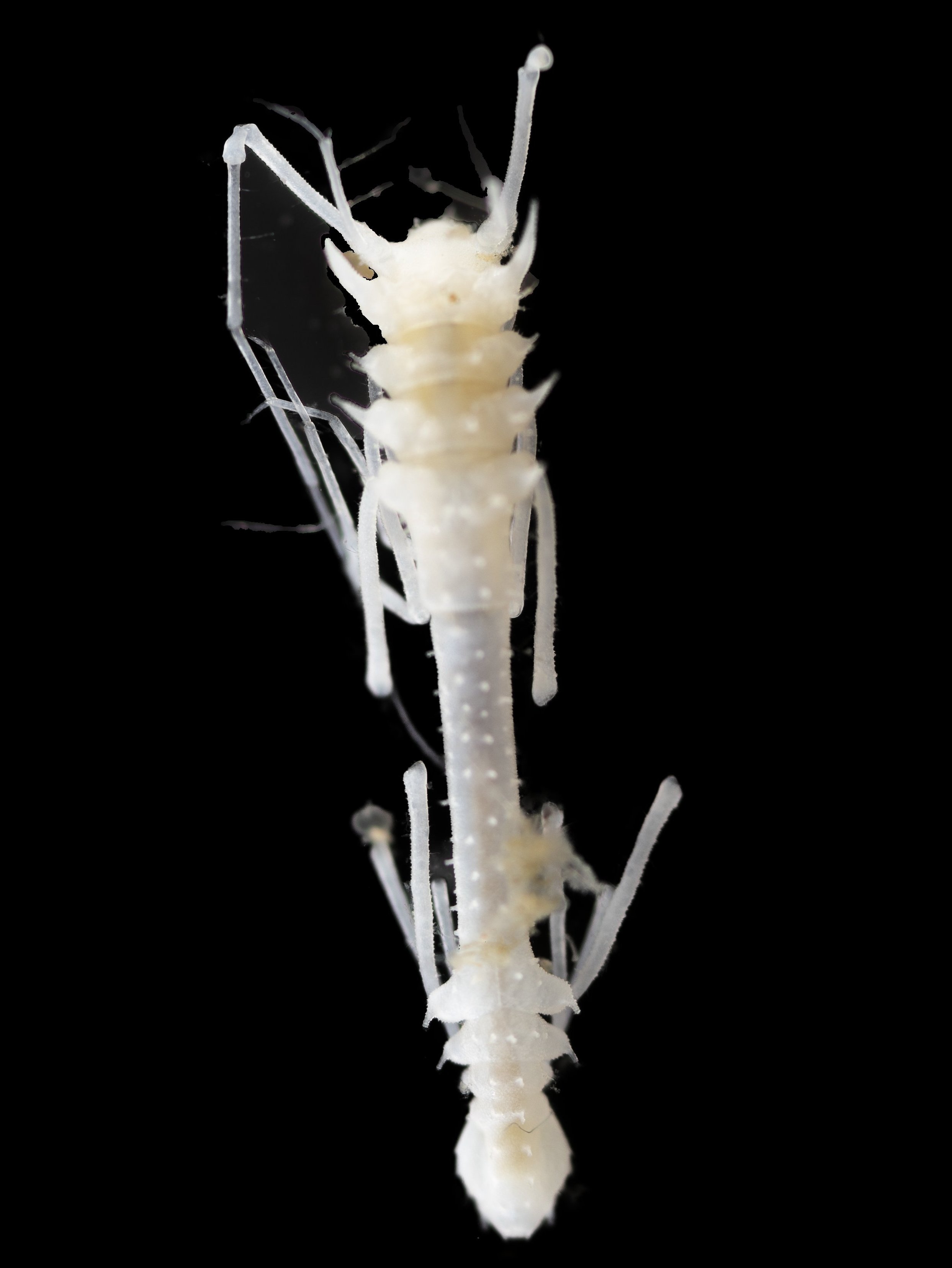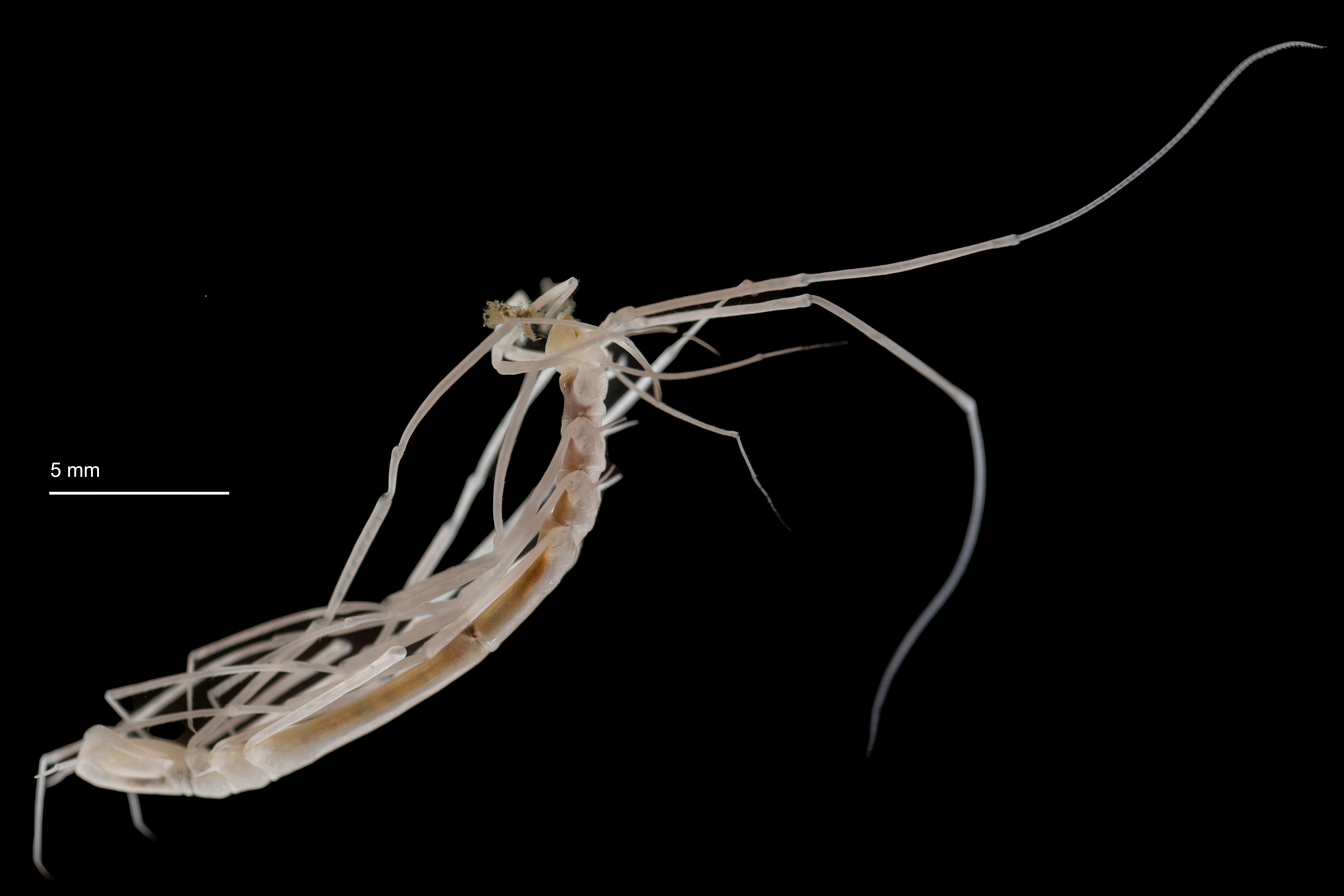What did we catch this time?
Hello from our floating scientific workstation! My name is Katharina Kohlenbach and luckily, I was able to join the AleutBio expedition as a Masters student.
I am part of the EBS (epibenthic sledge) team. Our work can be separated into roughly two parts. First, we need to extract the “catch” of deep-sea mud from the EBS. For this we dress ourselves in colorful working gear: neon orange pants, jackets, gloves, safety shoes with steel caps and a helmet. Equipped with these clothes, we are allowed on deck and can get the sediment from 7,200 m depth out of our EBS. We carefully sieve the sediment and directly pick out some of the animals for sorting and photography. Afterwards we preserve the rest of the sediment with ethanol.
After 48 hours, the second part of our job starts: sorting the fixed sediment. For this we have multiple steromicroscopes, where we sit, day in and day out, listen to music and pick out all the animals we can find among the sediment. Maybe this doesn’t sound interesting to you at first, but I am always amazed about all the life we can find “down there”. Next to graceful worms, beautiful foraminifera, delicate glass sponges and numerous copepods we can find transparent sea cucumbers, elegant brittle stars, tiny mussels and snails. However, we need to be careful to not damage the precious animals. In addition, we need to work “on ice” all the time to prevent the DNA from breaking down. The DNA is important for later analyses. Sometimes deep-sea animals can look completely the same but DNA results show that they are in fact different species! This means that we keep our Petri dishes on ice trays and don´t leave animals in the warm room temperature for too long.
I am especially happy when we find deep-sea isopods (which are related to woodlice), because I will write my master´s thesis about them, back at the Senckenberg Research Institute in Frankfurt. To be more specific, I will focus on one family of ispods: the Ischnomesidae. This family can be easily identified by an elongated segment in the middle of the body. We don´t know much about them from this part of the world and so it is super exciting to see where we will find them! At the first two stations in the Bering Sea, the Ischnomesids were so far the most abundant isopods. Hopefully my work can shed some light into their distribution in the Northeast Pacific!
I wish you all the best from the other side of the world!
Katharina Kohlenbach
